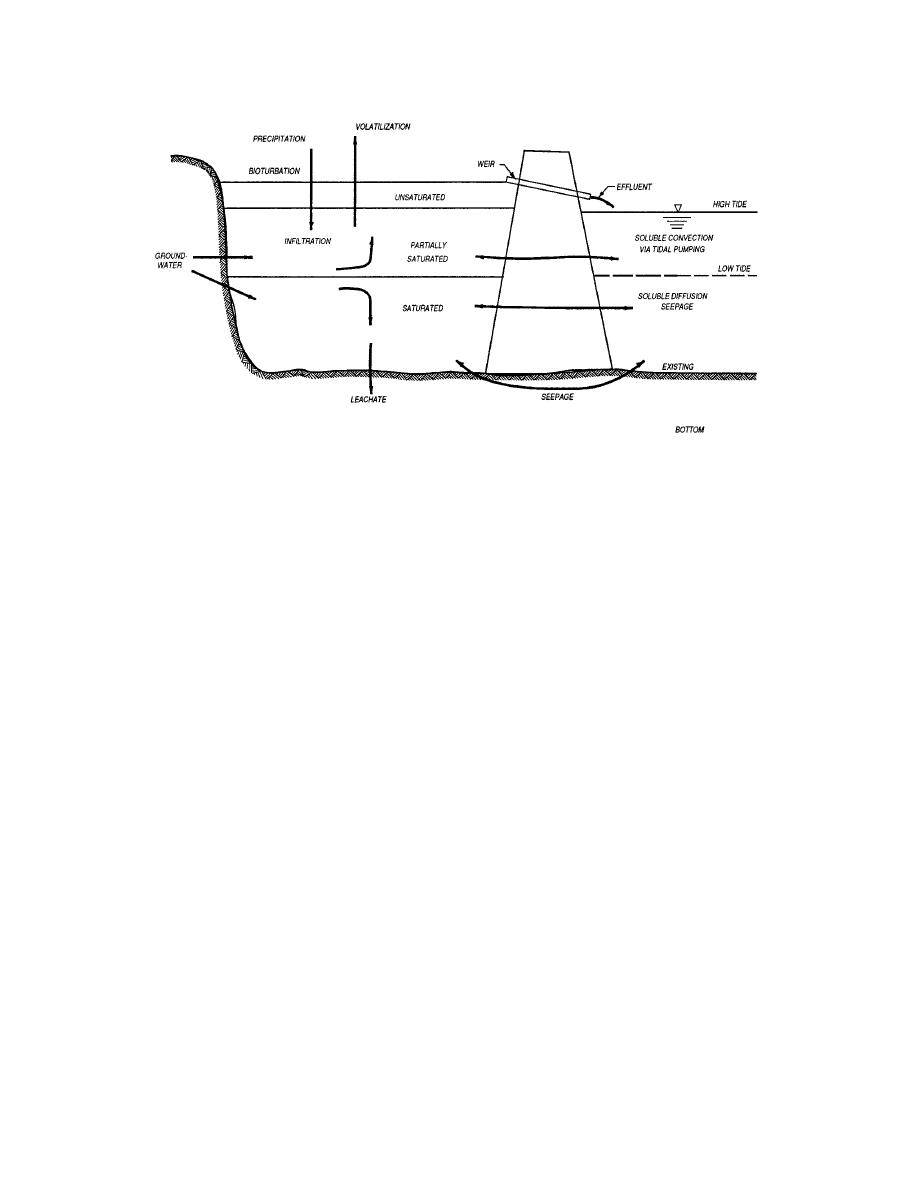 |
||
|
|
||
|
Page Title:
Figure 5-2. Contaminant Pathways for Nearshore CDFs |
||
| |||||||||||||||
|
|
 Framework for Dredged Material Management
May 2004
Figure 5-2. Contaminant Pathways for Nearshore CDFs
During the drying process, organic complexes become oxidized and decompose.
Sulfide compounds also become oxidized to sulfate salts, and the pH may drop
drastically. These chemical transformations can release complex contaminants to surface
runoff, soil pore water, and leachate. In addition, plants and animals that colonize the
upland site may take up and bioaccumulate these released contaminants.
Volatilization of contaminants depends on the types of contaminants present in
the dredged material and the mass transfer rates of the contaminants from sediment to air,
water to air, and sediment to water. Release of the dredged material slurry above the
water level in the CDF surface will enhance volatilization as the slurry impacts the CDF
surface, creating turbulence and releasing dissolved gases. The transfer rate for organics
such as polychlorinated biphenyls (PCBs) from water to air is generally slower, but of
longer duration, than from sediment to air (Thibodeaux 1989).
CDFs constructed totally or partially in water will usually receive dredged
material until the final elevation is above the high-water elevation. Three distinct
physicochemical environments may eventually exist at such a site: upland (dry
unsaturated layer), intermediate (partially or intermittently saturated layer), and aquatic
(totally saturated layer) (Lee et al. 1991).
When material is initially placed in an in-water CDF, it will all be flooded or
saturated throughout the vertical profile. The saturated condition is anaerobic and
reduced, which favors immobility of contaminants, particularly heavy metals. After the
site is filled and dredging ceases, the dredged material above the water level begins to
dewater and consolidate through movement of water downward as leachate, upward and
out of the site as surface drainage or runoff, and laterally as seepage through the dike. As
40
|
|
Privacy Statement - Press Release - Copyright Information. - Contact Us - Support Integrated Publishing |